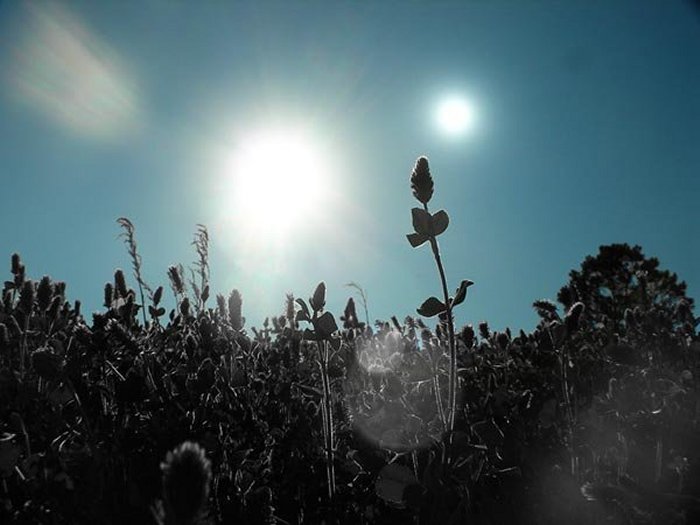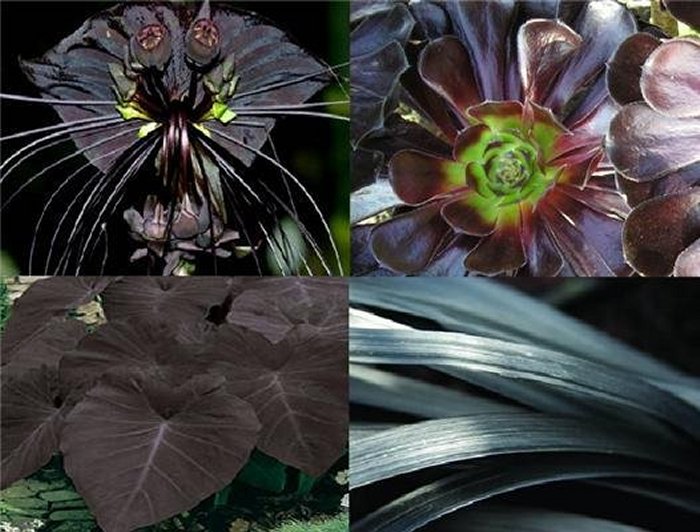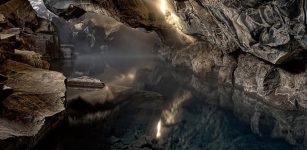Black Plants Could Exist On Alien Worlds With Two Suns
Ellen Lloyd – MessageToEagle.com – We have previously seen what auroras might like on alien worlds.
This time we examine how life on planets in binary star systems can evolve.
Earth-like planets with two or three suns would have multiple sources of light that could be used for photosynthesis. This means plants on such worlds could be dark, even completely black.
Photosynthesis, converting sunlight into energy is the basis for the majority of life on Earth.
It is the energy source for plants and, hence, animals higher up the food chain. With multiple light sources, life may have adapted to use all suns, or different forms may develop that choose to use one specific sun. This may be the more likely option for planets on which parts of the surface are illuminated by only one sun for long periods of time.
“If a planet were found in a system with two or more stars, there would potentially be multiple sources of energy available to drive photosynthesis. The temperature of a star determines its color and, hence, the color of light used for photosynthesis.

Depending on the colors of their star-light, plants would evolve very differently,” said O’Malley-James of the University of St. Andrews has studied what plants might be like on an Earth-like planet with two or three suns.
O’Malley-James is working on a PhD, supervised by Dr. Jane Greaves at the University of St. Andrews, Prof. John Raven of the University of Dundee and Prof. Charles Cockell of The Open University, to assess the potential for photosynthetic life in multi-star systems with different combinations of Sun-like stars and red dwarfs.
Sun-like stars are known to host exoplanets and red dwarfs are the most common type of star in our Galaxy, often found in multi-star systems, and old and stable enough for life to have evolved.
See also:
- Auroras On Alien Worlds Can Be Stunningly Beautiful
- Plasma Aliens Could Live Inside “Black Clouds”- Extraterrestrial Life Can Be Stranger Than We Even Dare To Imagine
- Advanced Extraterrestrial Civilizations – Their Technology And Capabilities: What Can We Expect?
Over 25% of Sun-like stars and 50% of red dwarfs are found in multi-star systems. In the team’s simulations, the Earth-like planets either orbit two stars close together or orbit one of two widely separated stars. The team has also looked at combinations of these scenarios, with two close stars and one more distant star.
“Our simulations suggest that planets in multi-star systems may host exotic forms of the more familiar plants we see on Earth.

Plants with dim red dwarf suns for example, may appear black to our eyes, absorbing across the entire visible wavelength range in order to use as much of the available light as possible. They may also be able to use infrared or ultraviolet radiation to drive photosynthesis.
For planets orbiting two stars like our own, harmful radiation from intense stellar flares could lead to plants that develop their own UV-blocking sun-screens, or photosynthesizing microorganisms that can move in response to a sudden flare,” said O’Malley-James.
Written by Ellen Lloyd – MessageToEagle.com
Copyright © MessageToEagle.com & Ellen Lloyd All rights reserved. This material may not be published, broadcast, rewritten or redistributed in whole or part without the express written permission of MessageToEagle.com and Ellen Lloyd
Expand for referencesReferences:
Royal Astronomical Society
Related Posts
-
 Aqrabuamelu – Mysterious Scorpion Men In Babylonian Mythology
No Comments | Jan 19, 2016
Aqrabuamelu – Mysterious Scorpion Men In Babylonian Mythology
No Comments | Jan 19, 2016 -
 Paint Rock Indian Pictographs In Texas
No Comments | May 19, 2016
Paint Rock Indian Pictographs In Texas
No Comments | May 19, 2016 -
 Fantastic Biological Street Lighting: Using Glowing Plants And Trees As An Energy Source
No Comments | Jun 2, 2016
Fantastic Biological Street Lighting: Using Glowing Plants And Trees As An Energy Source
No Comments | Jun 2, 2016 -
 Remarkable 150 Million Years Old And Earliest Known Flesh-Eating Fish
No Comments | Oct 22, 2018
Remarkable 150 Million Years Old And Earliest Known Flesh-Eating Fish
No Comments | Oct 22, 2018 -
 Ancient Mystery Of Upton Chamber Cave In Massachusetts: One Of The Largest Ancient Man-Made Structures In New England
No Comments | Oct 2, 2016
Ancient Mystery Of Upton Chamber Cave In Massachusetts: One Of The Largest Ancient Man-Made Structures In New England
No Comments | Oct 2, 2016 -
 World’s Largest Underground Lake Lies Inside The Dragon’s Brеаth Cave
No Comments | Feb 28, 2016
World’s Largest Underground Lake Lies Inside The Dragon’s Brеаth Cave
No Comments | Feb 28, 2016 -
 Astonishing News: First Photo Ever Of Living Extraterrestrial Organism Captured By Scientists
No Comments | Sep 7, 2015
Astonishing News: First Photo Ever Of Living Extraterrestrial Organism Captured By Scientists
No Comments | Sep 7, 2015 -
 DNA Can Reveal What You Look Like – Controversial Study Suggests
No Comments | Sep 19, 2017
DNA Can Reveal What You Look Like – Controversial Study Suggests
No Comments | Sep 19, 2017 -
 Existence Of Time – One Of The Greatest Mysteries Of The Universe
No Comments | Feb 5, 2022
Existence Of Time – One Of The Greatest Mysteries Of The Universe
No Comments | Feb 5, 2022 -
 Time Travel Communication: Sending Messages Through Time Can Be Possible – Says Professor
No Comments | Sep 20, 2015
Time Travel Communication: Sending Messages Through Time Can Be Possible – Says Professor
No Comments | Sep 20, 2015
